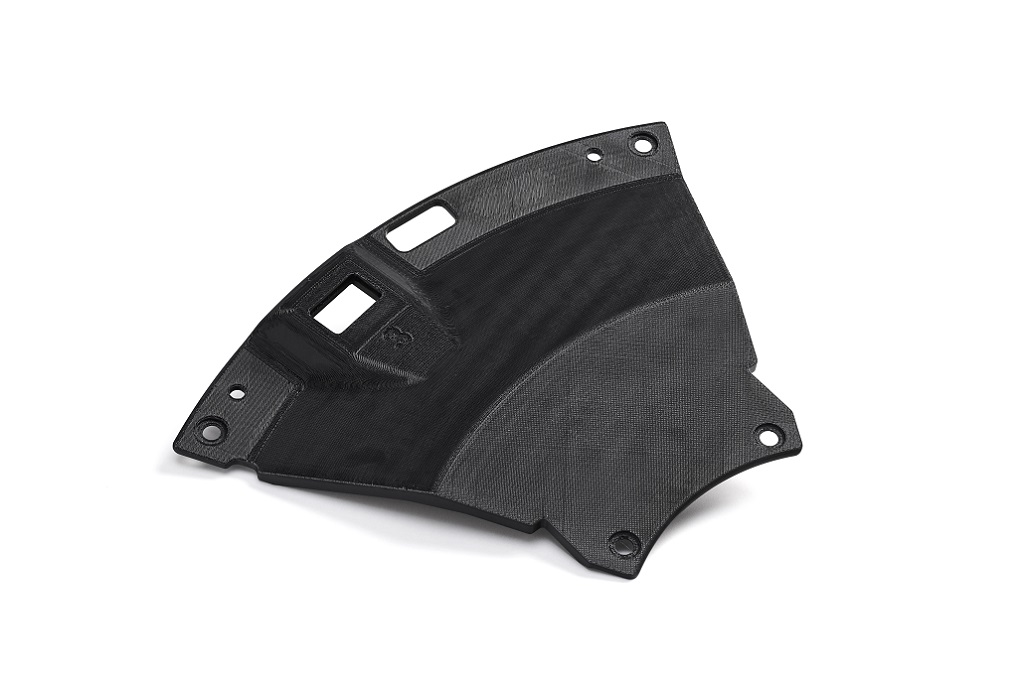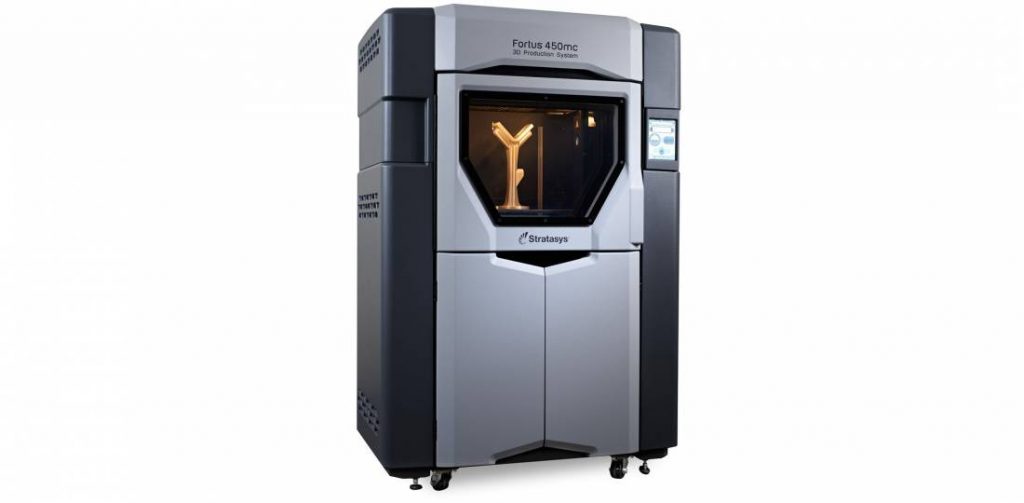The 3D Printing Industry Awards 2022 shortlists are now available for voting. Who will win the 2022 3DPI Awards? Have your say by casting your vote now.
3D printer OEM Stratasys has worked with Swedish software developer Hexagon to develop a way of fully-unlocking the aerospace potential of its Antero materials.
Using Hexagon simulation technology, the firms have discovered that it’s possible to model how parts 3D printed from Stratasys’ reinforced PEKK materials will behave, before they are ever manufactured. The companies say adopting their approach could make it easier for engineers to take advantage of lightweighting and sustainability opportunities in aerospace, an industry where such validation is vital.
“As the aerospace industry continues to push for more sustainable designs, unlocking the lightweighting potential of thermoplastics and 3D printing will be key,” said Aziz Tahiri, VP of global aerospace and defence for Hexagon’s Manufacturing Intelligence division. “By leveraging the power of our simulation technology, manufacturers gain access to proprietary information so their engineers can ‘work the problem’ with reliable information.”
“We’re excited to see how this next chapter with Stratasys will help the industry create lighter, stronger designs in any design engineering tool with more confidence and less cost.”

Aerospace 3D printing with PEKK
Much like PEEK, PEKK is a semi-crystalline thermoplastic that belongs to the polyaryletherketone (PAEK) family of polymers. The material also features a similarly high weight-to-strength ratio to PEEK, though it has a much lower crystallization rate. As such, PEKK can be treated as an amorphous polymer that’s less affected by cooling, and therefore less impacted by warpage and dimensional imprecision.
As an added benefit, PEKK’s extrusion temperature of 340°C to 400°C means it has the flame-retardancy needed to meet Federal Aviation Administration (FAA) standards on smoke toxicity. These properties have made the material an attractive proposition for those seeking to 3D print flight-ready aerospace parts, without having to produce them from metal.
To meet this demand, Hexcel launched its HexPEKK EM 3D material, a conductive polymer-based carbon fiber composite for 3D printing aircraft parts, two years ago. Since then, Kimya has also worked with one of its clients to create 3D printed PEKK railway spares, in a project that showcased the material’s potential elsewhere.
For its part, Stratasys markets its own PEKKs in the form of Antero 840CN03 and Antero 800NA. While the former is an electrostatic discharge (ESD)-safe material and the latter pairs toughness with low outgassing performance, both feature a high strength, heat and chemical resistance that make them ideal for aerospace applications.
Unlocking the potential of polymer AM
According to Hexagon, polymer 3D printing can potentially be transformative when it comes to lightweighting and reducing energy consumption during aircraft manufacturing. However, the firm believes the technology’s adoption in the industry continues to be held back by its safety-critical nature and tight regulation. It’s in this light that Hexagon began working with Stratasys to identify a validation method.
Together, the firms have worked to add Stratasys’ Antero 840CN03 and Antero 800NA thermoplastics to Hexagon’s Digimat materials exchange ecosystem. Thanks to their work, engineers can now access detailed models on the platform, from which it’s possible to create digital twins that predict how parts printed will perform.
Once users have specified the material and machine they intend to use, the software uses data gathered from real-world applications and certification tests to determine whether prints will work as desired. The platform also features finite element analysis (FEA) and computer-aided engineering (CAE) tools, designed to help manufacturers create lightweight parts while avoiding costly overengineering.
Using these rigorously-validated simulations, Stratasys customers now stand to benefit from unique insights into the performance of its materials, and Hexagon believes they could provide users with the “missing link” needed to truly bring the benefits of polymer 3D printing into the highly-regulated world of aerospace.
“When combined with Hexagon’s simulation insights and actionable data, these 3D printed materials’ ability to replace certain applications of aluminum and steel clearly points to growing use in the aerospace industry,” added Foster Ferguson, aerospace business segment leader at Stratasys. “We believe they meet manufacturers’ increasingly complex performance needs, and by combining innovative modeling software with 3D printing, can reduce production timelines from months to days.”
“The Antero 840CN03 and Antero 800NA thermoplastics provide unprecedented strength, heat, and chemical resistance.”

Check out our full Formnext news round-up for the latest from 3D printing’s leading trade show.
To stay up to date with the latest 3D printing news, don’t forget to subscribe to the 3D Printing Industry newsletter or follow us on Twitter or liking our page on Facebook.
While you’re here, why not subscribe to our Youtube channel? featuring discussion, debriefs, video shorts and webinar replays.
Are you looking for a job in the additive manufacturing industry? Visit 3D Printing Jobs for a selection of roles in the industry.
Featured image shows part of a hatch cover assembly 3D printed from Antero 840CN03 for NASA’s Orion spacecraft. Image via Stratasys.


